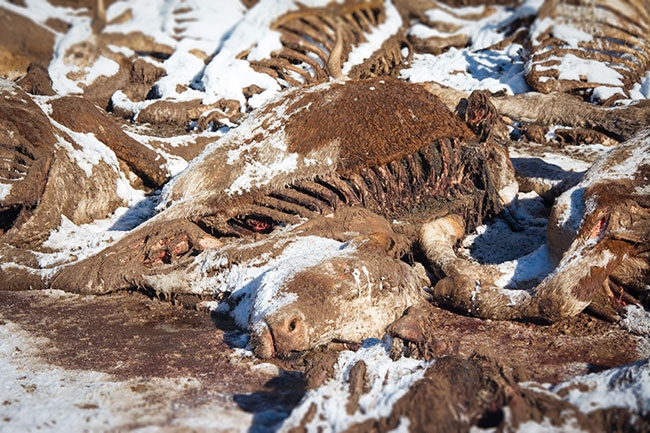
Features
Applications
Compost
Compost
Livestock Production
Research
Sustainability
Underground aerobic digestion
Researchers develop potential solution to carcass disposal during food-animal disease outbreaks.
June 15, 2018 by Manure Manager Staff
 Animal health emergencies occur around the globe each year due, not only to disease, but also to hurricanes, flooding, fire and blizzards. These incidents often require the disposal of numerous animal carcasses, usually accomplished via burial. Photo: Fotolia
Animal health emergencies occur around the globe each year due, not only to disease, but also to hurricanes, flooding, fire and blizzards. These incidents often require the disposal of numerous animal carcasses, usually accomplished via burial. Photo: FotoliaIowa State University researchers have completed testing of a new concept for disposing of animal carcasses following a disease outbreak.
In research published recently in the journal Waste Management, Dr. Jacek Koziel, associate professor of agricultural and biosystems engineering at ISU, studied a disposal method that could help livestock and poultry farmers deal with animal health crises more efficiently and safely.
Dr. Koziel and his team focused their research on improving on-farm burial, the method most commonly used for large-scale carcass disposal. Emergency burial can contaminate nearby water resources with chemical and biological pollutants. Buried carcasses also decay slowly, sometimes delaying use of burial sites for years.
To overcome these problems, the researchers studied a hybrid disposal concept conceived in South Korea following a 2011 outbreak of foot-and-mouth disease. The method combines burial with aerobic digestion, a method commonly used for treating sewage in which air is pumped through the content to speed decomposition. The experiment also included burial trenches lined with flexible geomembranes, like those used to prevent seepage from landfills and wastewater treatment ponds. The researchers then injected low levels of air into the trench bottom to accelerate carcass decomposition.
The experiment tested the performance of the aerobic component of the hybrid method in a lab using tanks containing whole chicken carcasses, water, and low levels of oxygen.
Results of the study showed low levels of oxygen accelerated carcass decay significantly, reducing carcass mass by 95 percent within 13 weeks. Similar tests without air produced no noticeable decay.
Chemical contamination in the liquid waste met U.S. EPA criteria for safe discharge to surface waters. The hybrid method also eliminated salmonella and staphylococcus. Aeration also reduced odorous gases sometimes associated with mass burial.